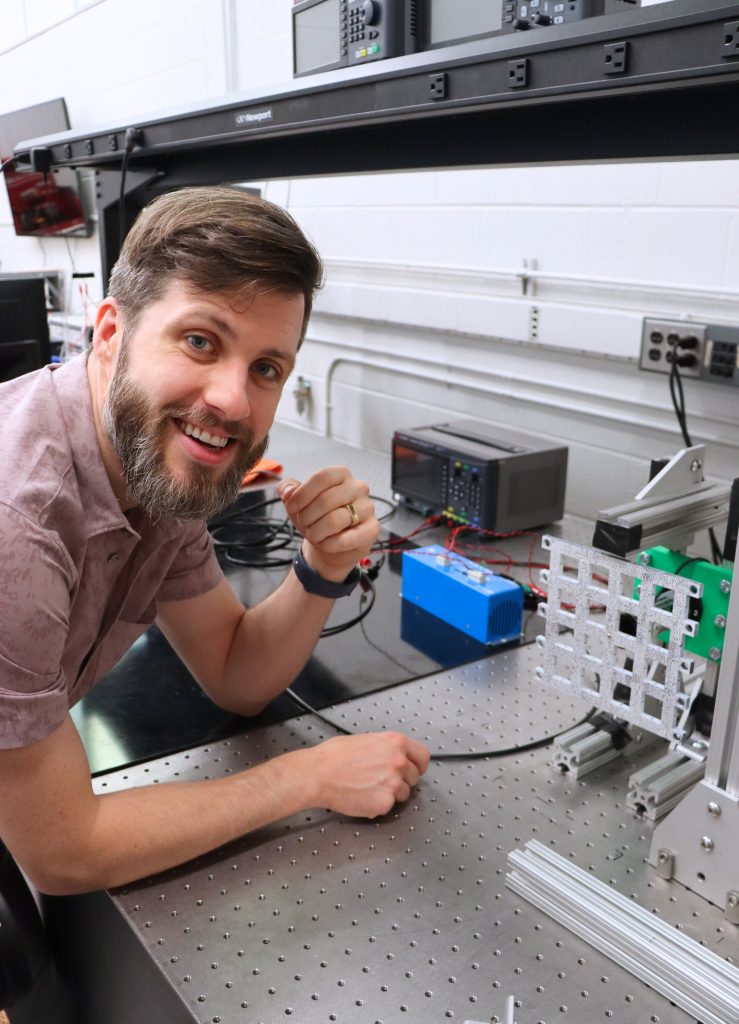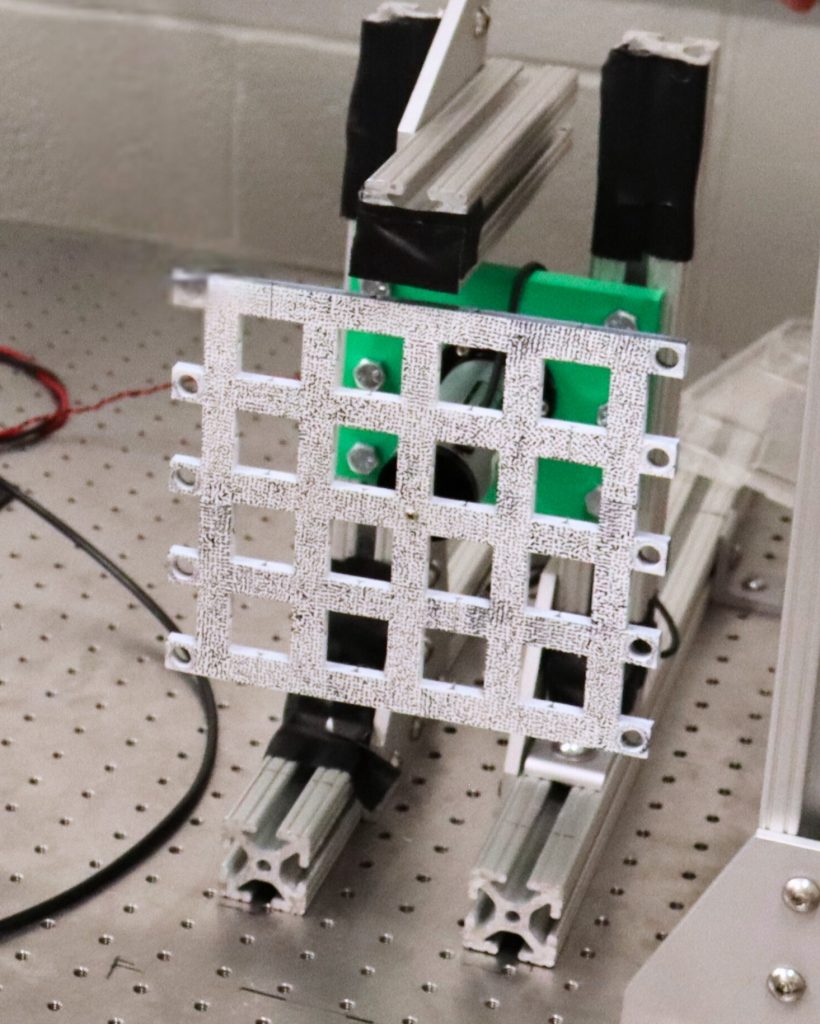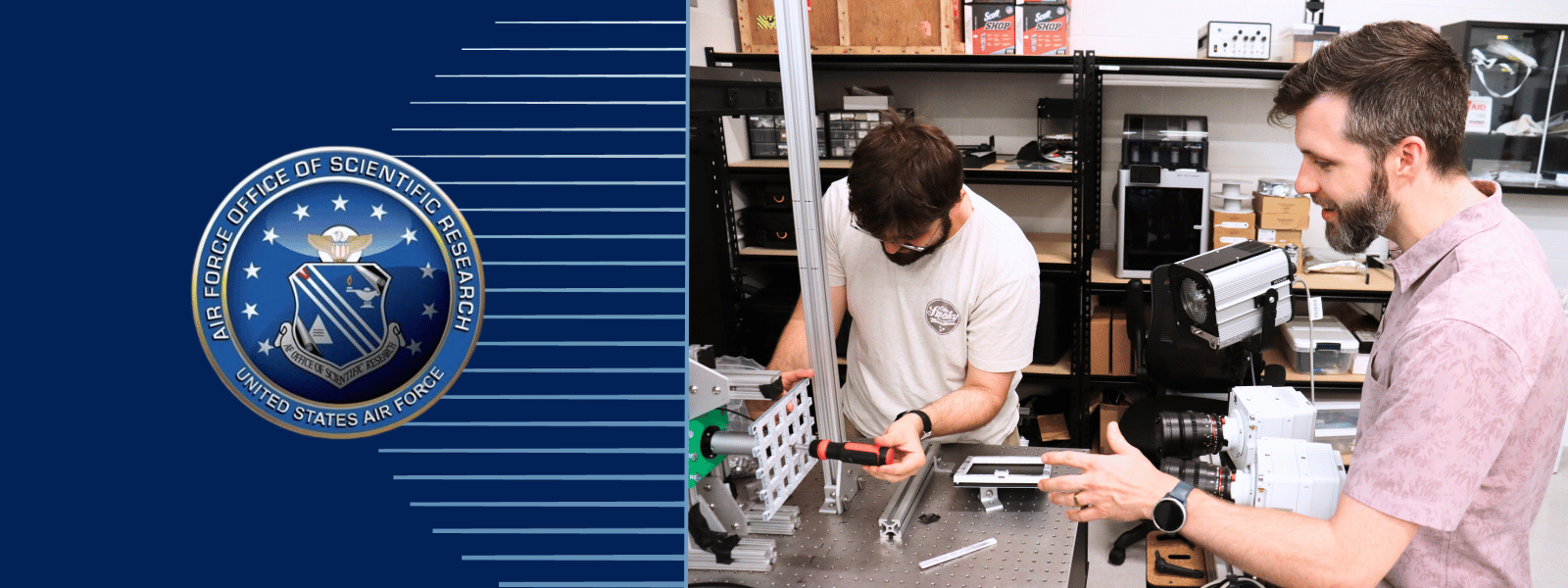The Air Force Office of Scientific Research (AFOSR) Young Investigator Program (YIP) is a highly competitive and prestigious award granted to early-career scientists and engineers who show exceptional promise. It provides three years of research funding totaling $450,000. Beyond the monetary support, being selected is a significant professional honor.

Patrick Musgrave, mechanical and aerospace engineer at the University of Florida, knows the feeling firsthand. As a Gator engineer, an assistant professor, and director of the Fluids and Adaptive Structures Laboratory in UF MAE, Musgrave was selected for the 2025 AFOSR YIP for his bold and innovative approach to a fundamental aerospace challenge: unsteady airflow.
Imagine flying an aircraft through the clouds. The very act of flying generates turbulence, shock waves, and vortices that constantly affect the aircraft, either from the surrounding environment or shed from its own surfaces. Every movement, whether a change in speed, angle, or altitude, alters these airflows. These shifting forces create unsteady conditions that make lift unpredictable and reduce the effectiveness of the aircraft’s wings. Musgrave’s research aims to help aircrafts respond to these unpredictable forces in real time, using the structure of the aircraft itself.
Traditionally, sensing and responding to airflow involves outfitting aircraft with numerous sensors and running the data through powerful onboard computers, but this method is heavy in hardware and computations. Musgrave is developing materials that can sense, process, and act all on their own. His approach uses the natural vibrations within the aircraft’s body instead of relying solely on electronics. The way the structures in the body of the vessel are vibrated by wind flow can be analyzed to tell the system how to respond and adapt to changes in airflow. The structure effectively becomes its own sensor and decision maker.
“I’m fascinated by how things move, bend, flex, and contain information,” Musgrave says. “To me, it’s amazing that a dynamically moving structure can act like a computer. It can make decisions, even replace electronics. It could be as simple as a piece of plastic doing incredible things.”

This vibration-based method could reduce the need for external sensors and complex computation. In turn, this would lead to aircraft that are lighter, faster, more energy-efficient, and better able to respond to their environment without added complexity.
By the end of the three-year award period, Musgrave hopes to demonstrate working physical prototypes operating in realistic aerodynamic conditions. His vision could help redefine how aircraft are designed to handle the unpredictable skies.
“The YIP is a great opportunity to strengthen my ties with the Air Force Research Labs—both by building new relationships and expanding on the ones I already have at Wright-Patterson and Eglin Air Force Bases,” Musgrave said. “I’m really grateful for the chance to take part in something that supports both my research and these important collaborations.”
Story & Editing by: Christi Swiers
Marketing & Communications Specialist
UF Mechanical & Aerospace Engineering

